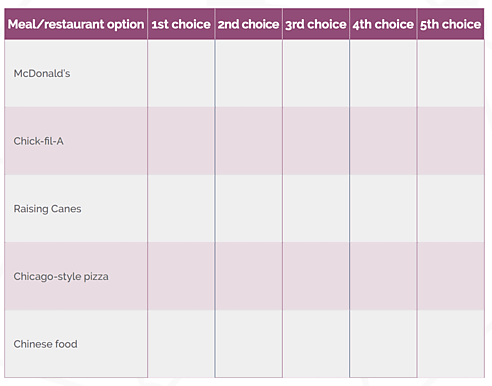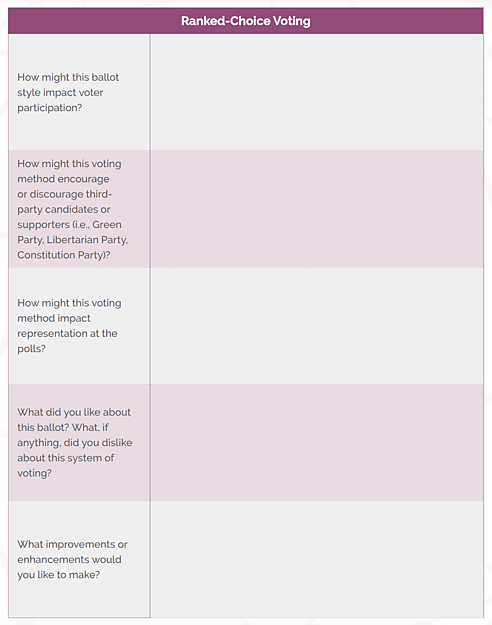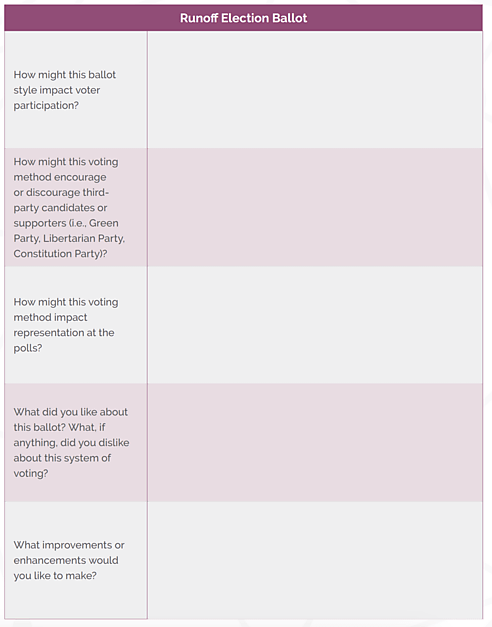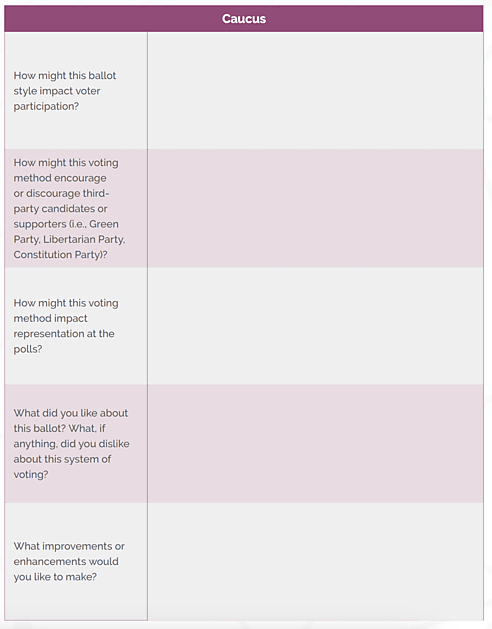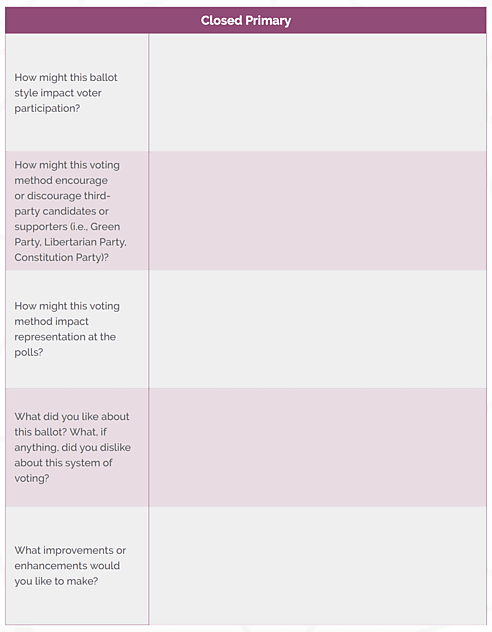Objectives
- Understand the different methods of voting, including ranked‐choice voting, split primaries, closed primaries, runoff elections, and caucusing
- Analyze the advantages and disadvantages of each voting method
- Evaluate the impact of different voting methods on the democratic process






